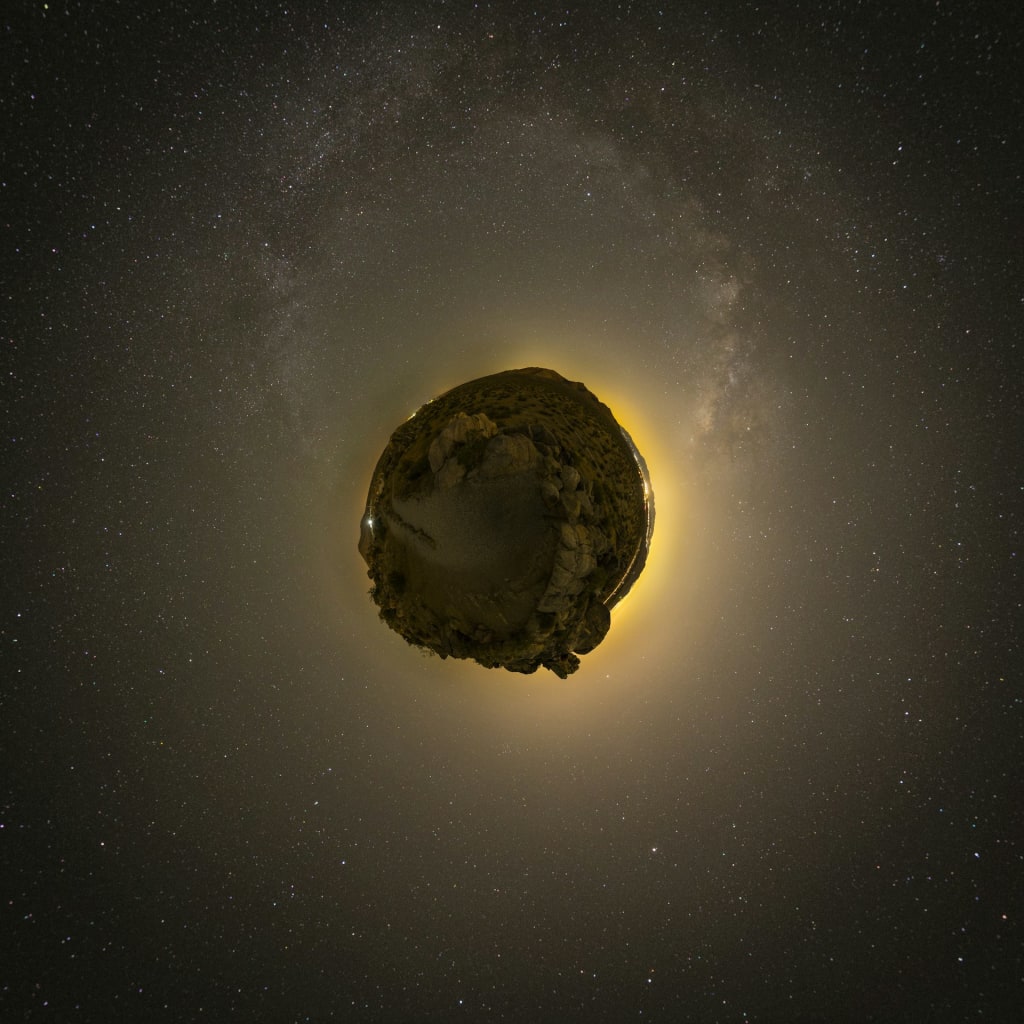The Most Dangerous Asteroid Is Here, But NASA Has a Plan
The Giant Space Rock that Terrifies Scientists: Apus

If an asteroid like Apus hits Earth, we will be destroyed. Massive earthquakes will strike, and tsunamis will flood everything. Apus is a billion-year-old celestial body that has been in the Solar System since its inception. You might be thinking, "How likely is it that this giant spacestone will collide with our planet in 2029?" Well, let's find out, shall we?
Apus is a big bad asteroid discovered in 2004 by the Kit Peak National Observatory in Arizona. Since then, it has proudly held the title of one of the most dangerous asteroids ever located. It's around 1,100 feet wide, which is a bit bigger than the Empire State Building and the Eiffel Tower. Because of how scary it is, it was named Apus, like the Egyptian immortal creature that was considered to bring eternal darkness and destruction to the world.
Oh boy, in 2021, researchers had a once-in-a-lifetime opportunity to study this floating rock when it passed near our planet, and we'll come back to that in a minute. Now, some scientists say that there is a small chance of Apus hitting the Earth on Friday, April 13th, 2029. The Rożek effect is to blame for this since it can slightly nudge the space rock towards Earth. This effect originates from the uneven emission of thermal photons from a rotating celestial object, resulting in a fascinating force exerted upon it in space. These emitted photons possess momentum and play a pivotal role in shaping the dynamics of the body.
The asteroid has two sides, light and dark, just like the moon. The light side faces the Sun and is warmer than the dark side. But the thing also turns, so the sides constantly change direction and temperature. This change could be detrimental because it slightly pushes Apus toward Earth. Unfortunately, nobody knows how the Rożek effect will influence the asteroid's path.
On the other hand, on the asteroid's last flyby of Earth in 2021, astronomers used radar to take accurate measurements of its trajectory and confidently concluded that Apus will safely miss Earth in 2029 by about 20,000 miles and won't bother us again for at least 1,100 years.
Generally speaking, every 8,000 years, our planet is hit by a falling star that has similar dimensions to those of Apus. The last time we were hit by a slightly smaller meteor was in 2013.
A new spacecraft developed by NASA called the Osiris Rex was launched in 2016 to collect samples from another slightly less terrifying celestial body called Bennu. Four years later, it finally arrived at the thing, got some samples, quickly said goodbye to Bennu, and started traveling back toward Earth. The samples were safely stored in a capsule dropped in Utah. So far, this has been the most significant sample ever taken from an asteroid.
After the delivery, the spacecraft didn't waste any time and started chasing Apus. Now Osiris Rex has been renamed to Osiris Apex and is currently playing tag with Apus. With some luck, on the 2nd of April 2029, when the asteroid zips close by Earth, the spacecraft will reach Apus and land on it. It will stay on Apus for 18 months, collecting valuable information and taking thousands of pictures.
The asteroid will be monitored with the help of powerful telescopes. At some point, Apus will get too close to the Sun, and then all the monitoring work will be on Osiris's Apex.
If you live in Europe, West Asia, or Africa, you're one of those lucky people who will have a once-in-a-lifetime opportunity to see Apus with the unaided eye. It'll be visible in the sky in these regions in 2029, and those who have telescopes will be able to spot it once again in 2036.
Osiris Apex will experience some problems because the asteroid has a thick crust, and the spacecraft won't be able to collect data as easily as it did with Bennu. Osiris Apex has a unique thruster that will blow all the dust from Apus while landing. This will be a perfect chance to analyze the surface of the asteroid to see what it's made of. The craft will spend 1 and 1/2 years mapping the asteroid, trying to detect changes in its shape. All this research will show how the celestial body is likely to move so we can better design plans to protect Earth from such things.
In 2025, NASA is also going to launch the mission Apus Pathfinder, and it will be the first spaceship to ever touch this asteroid. It will land approximately a year after its launch. Also, NASA has proposed sending a swarm of tiny craft into space to help humanity develop effective protective tactics against asteroid strikes.
We know that Apus originated in the primary asteroid belt between Mars and Jupiter. In the past million years, this celestial body has changed its path because of the considerable influence of Jupiter's gravitation. Now it seems like it favors the Sun more, meaning this asteroid will come very close to Earth. That's why it's classified as a near-Earth celestial body.
A lot of tests and research have been done to find a way to deal with asteroids. Some solutions include drilling and detonating the space body from inside or testing new technologies like attaching rockets to it and trying to steer it away from Earth. We can also hit it with something moving at high speeds to make it change its course.
About the Creator
Abdul Hannan Saif
Blogger | Writer | Explorer | wish to inspire, inform and help others to see fascinating discoveries and live a fulfilled life!






Comments
There are no comments for this story
Be the first to respond and start the conversation.